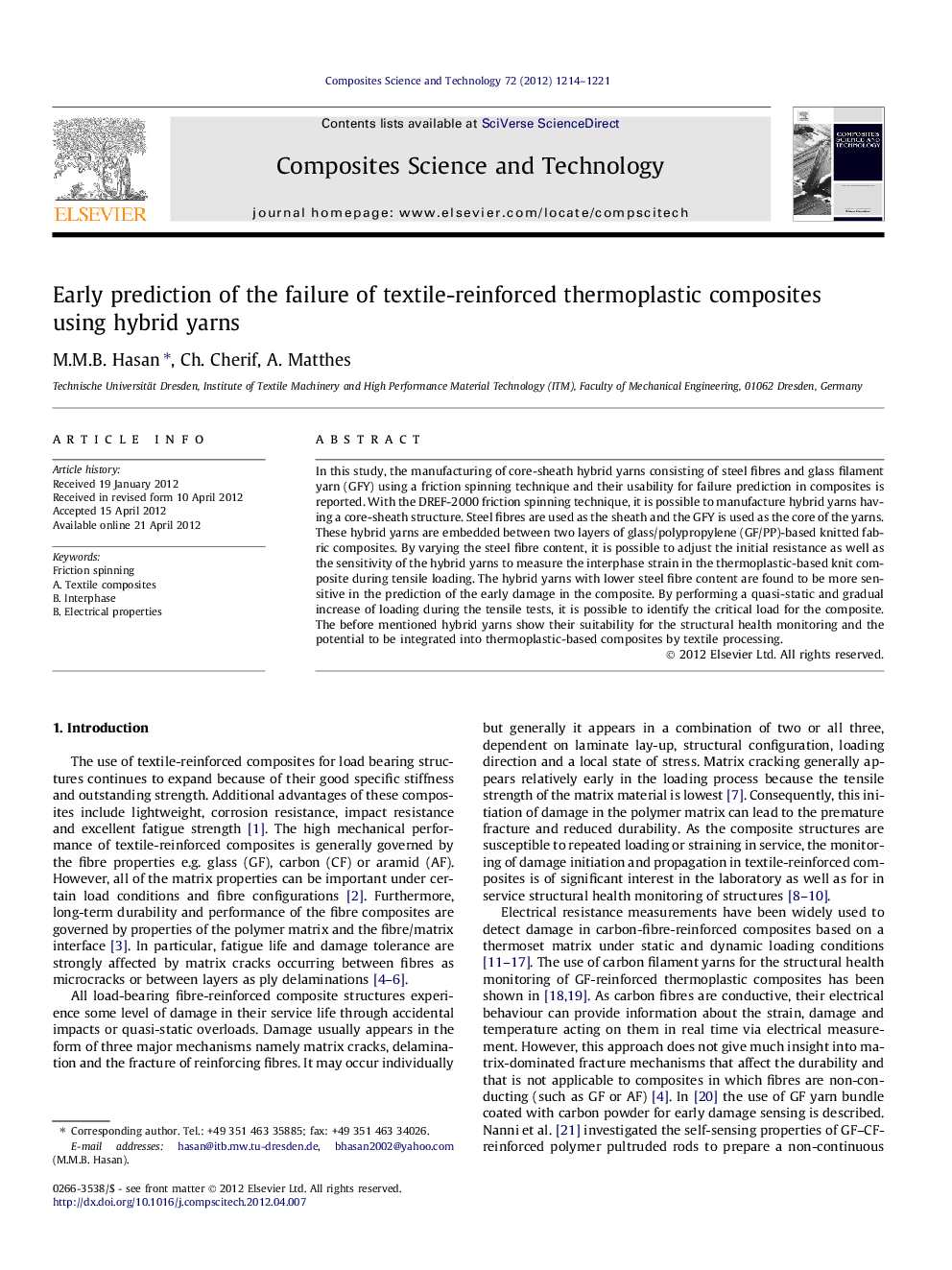| Article ID | Journal | Published Year | Pages | File Type |
|---|---|---|---|---|
| 820671 | Composites Science and Technology | 2012 | 8 Pages |
In this study, the manufacturing of core-sheath hybrid yarns consisting of steel fibres and glass filament yarn (GFY) using a friction spinning technique and their usability for failure prediction in composites is reported. With the DREF-2000 friction spinning technique, it is possible to manufacture hybrid yarns having a core-sheath structure. Steel fibres are used as the sheath and the GFY is used as the core of the yarns. These hybrid yarns are embedded between two layers of glass/polypropylene (GF/PP)-based knitted fabric composites. By varying the steel fibre content, it is possible to adjust the initial resistance as well as the sensitivity of the hybrid yarns to measure the interphase strain in the thermoplastic-based knit composite during tensile loading. The hybrid yarns with lower steel fibre content are found to be more sensitive in the prediction of the early damage in the composite. By performing a quasi-static and gradual increase of loading during the tensile tests, it is possible to identify the critical load for the composite. The before mentioned hybrid yarns show their suitability for the structural health monitoring and the potential to be integrated into thermoplastic-based composites by textile processing.
